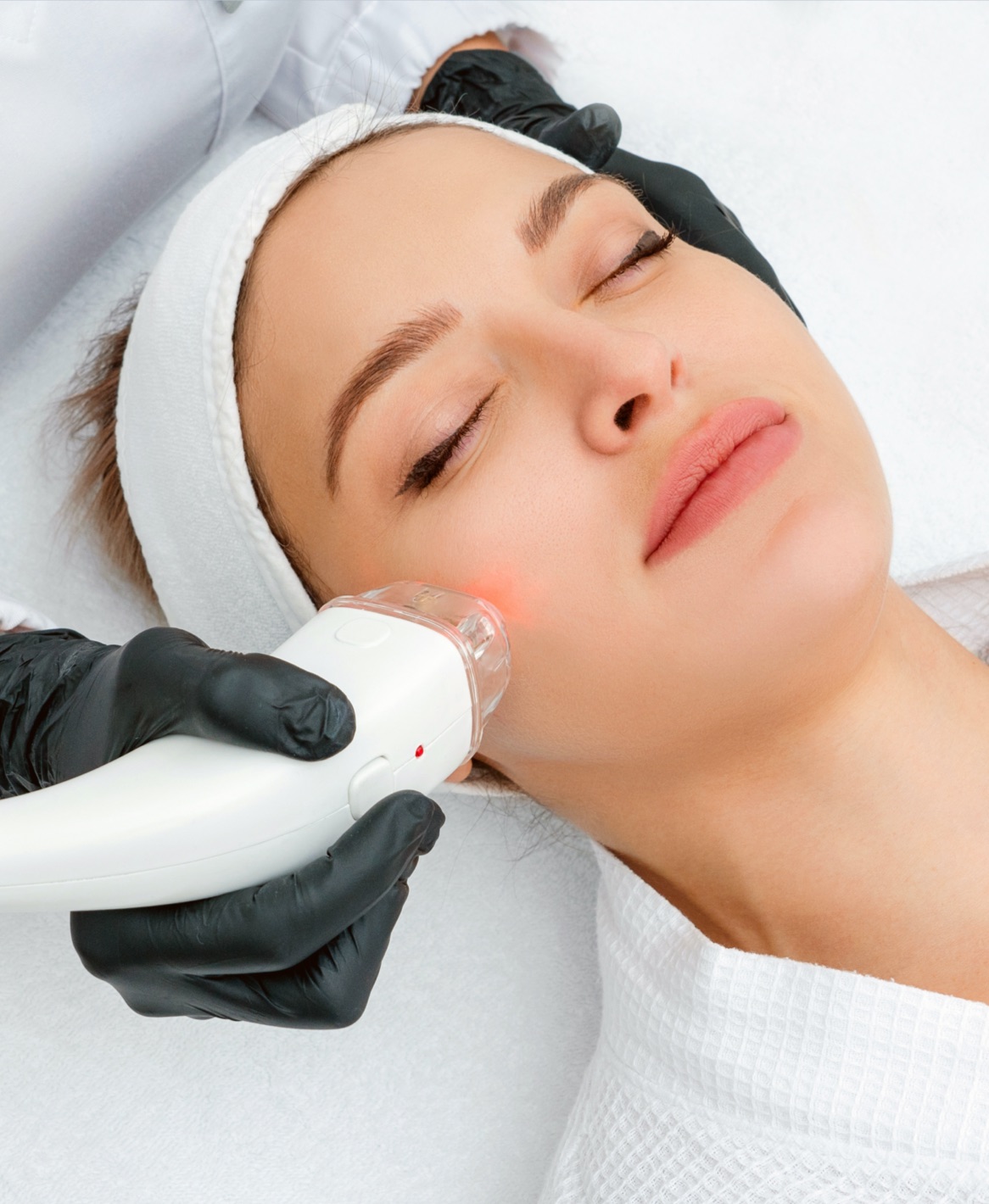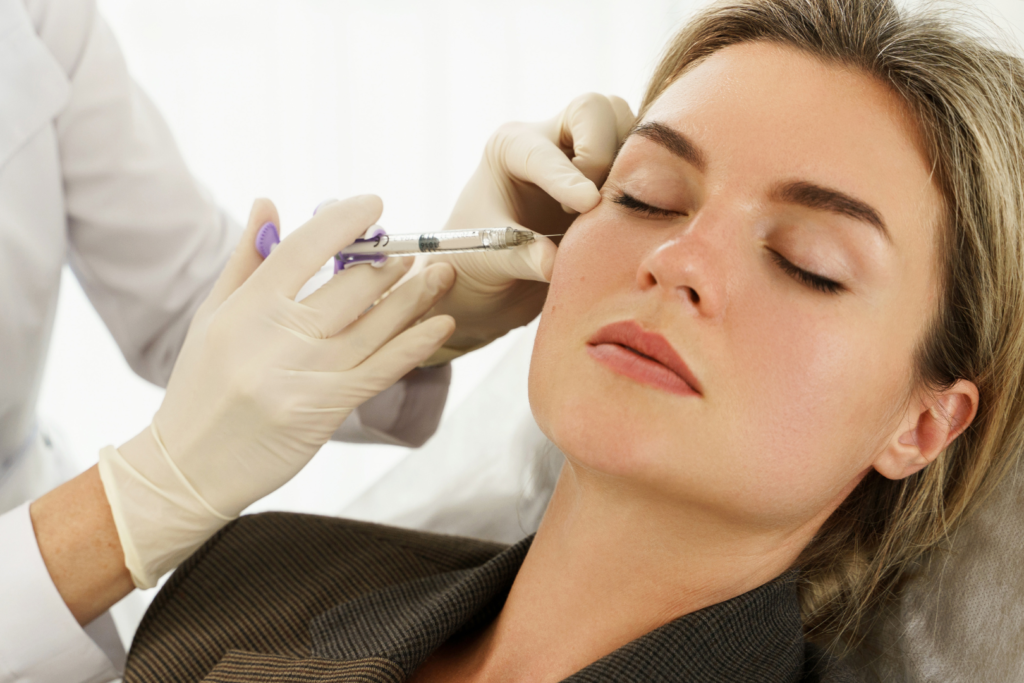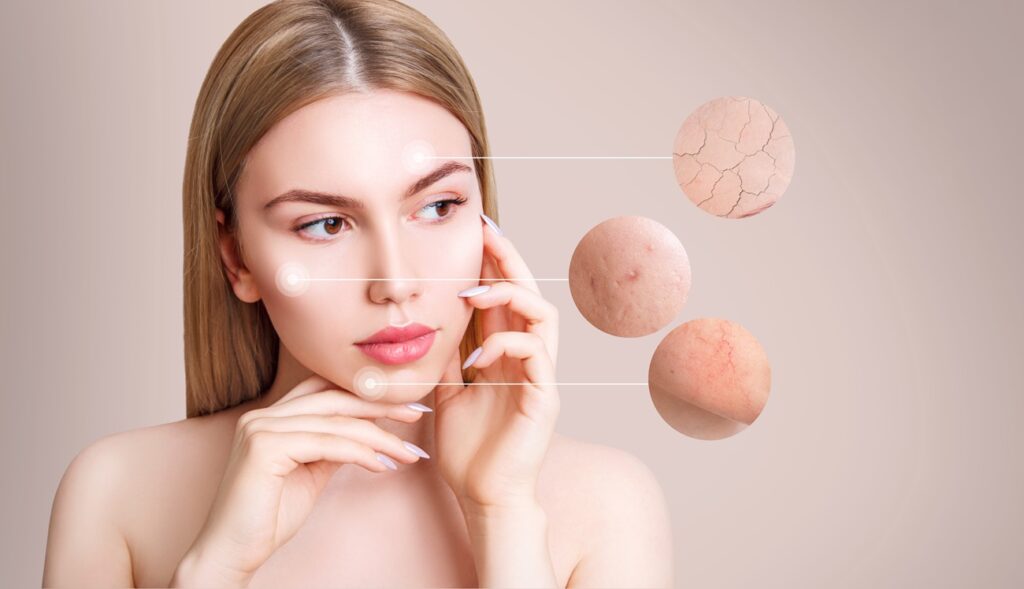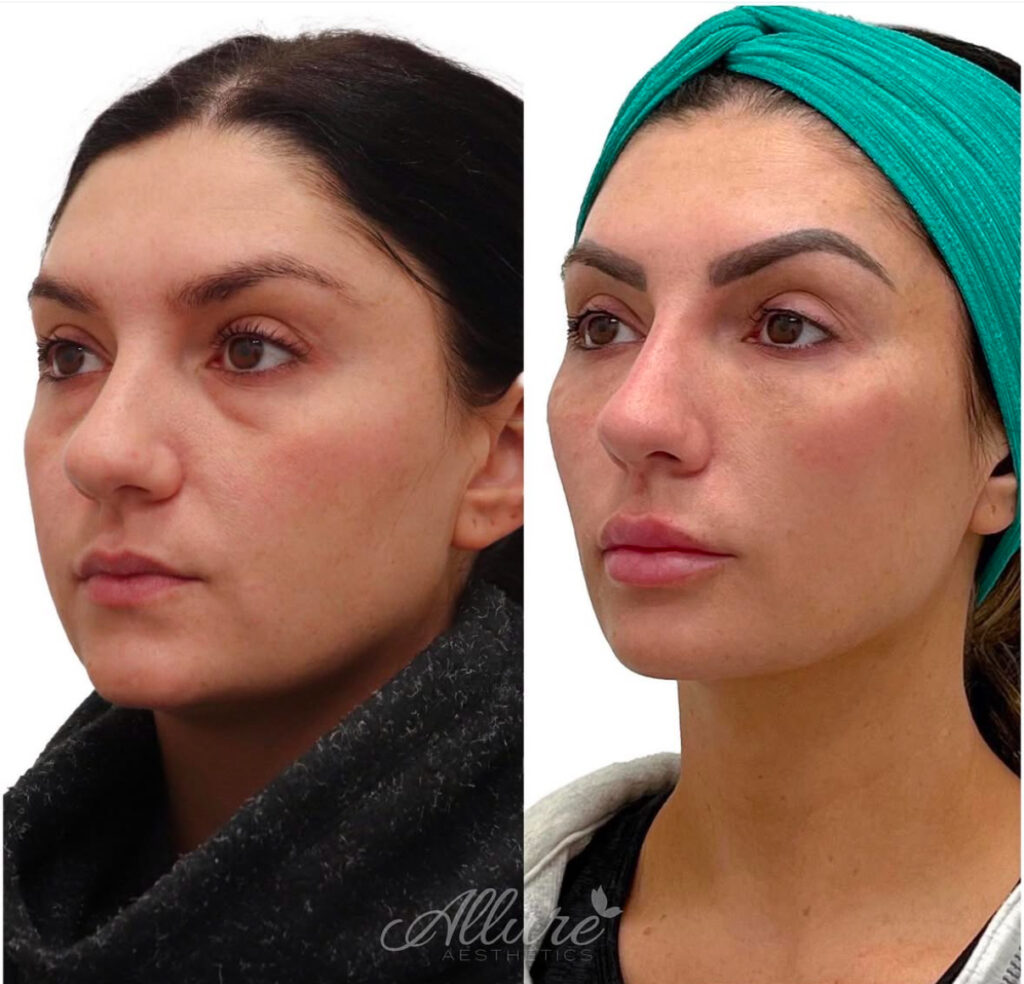Types of Laser Treatments, How They Work, and Their Uses
Introduction to Laser and Phototherapy Treatments
Laser and phototherapy treatments have revolutionized skin care and aesthetic medicine, offering non-invasive or minimally invasive options for many conditions. These technologies use light energy to target specific tissues, achieving results through new types of laser treatments that were previously difficult or impossible to obtain with traditional methods.
History of Laser and Phototherapy Treatments
The concept of using light for therapeutic purposes dates back to ancient civilizations. However, the development of lasers began in the 20th century:
- 1960: Theodore Maiman developed the first working laser (a ruby laser).
- 1963: The first medical application of lasers was performed, using a ruby laser to remove a tumor from a patient’s retina.
- 1980s: The advent of carbon dioxide (CO2) lasers and pulsed dye lasers expanded the use of lasers in skin care.
- 2000s: Advances in laser technology led to the development of fractional lasers, Q-switched lasers, and more.
Mechanism of Action
The effectiveness of laser and phototherapy treatments lies in their precise mechanisms of action (how they work). These technologies utilize specific light properties to interact with the skin’s chromophores (a molecule that absorbs light, such as melanin, blood, or water), triggering a range of effects that target and treat various conditions.
Lasers
Lasers emit light that is coherent (moving in sync), monochromatic (a single color or wavelength) and focused (concentrated on a small area). The mechanism of action involves the selective absorption of light by the target chromophores within the skin. The absorbed light energy is turned into heat, leading to:
- Photothermal effect: Heating and destruction of the target tissue. This is useful to target specific pigmented areas or visible blood vessels.
- Photomechanical effect: High-intensity pulses causing mechanical disruption. This can help to break down specific unwanted tissue.
- Photochemical effect: Creating chemical reactions within cells. This can help to heal or improve certain skin conditions.
Phototherapy
Phototherapy uses non-laser light sources, such as UV light, LED, or IPL (Intense Pulsed Light). The mechanism of action varies:
- UV Phototherapy: Induces DNA damage in skin cells, leading to reduced proliferation (growth and increase) and inflammation. This is particularly useful for conditions like psoriasis or eczema. This DNA change is temporary in the treated areas, it does not cause an overall change in your DNA.
- LED Therapy: Promotes cellular activity and collagen production (used in acne and wound healing).
- IPL: Uses broad-spectrum light to target pigmented and vascular lesions, as well as for hair removal.
Types of Laser Treatments
The wide variety of laser and phototherapy treatments available today cater to diverse skin concerns, each with its own unique benefits and mechanisms. These treatments range from highly precise ablative lasers that resurface the skin to non-invasive therapies like LED and IPL that promote healing and rejuvenation. Understanding the different types of laser and phototherapy treatments is crucial for selecting the most appropriate option to address specific cosmetic and skin care needs.
Ablative Lasers
Ablative lasers, such as CO2 and Erbium YAG lasers, work by removing the outer layers of the skin through vaporization. These lasers emit light that is absorbed by water in the skin, causing the immediate ablation (removal or destruction) of targeted tissue. This type of laser is highly effective for deep skin resurfacing and treating significant wrinkles, scars, and various skin lesions. Due to their aggressive nature, ablative lasers require significant recovery for healing as they target the surface and deeper layers of the skin, leading to substantial tissue regeneration and remodeling.
1. CO2 Lasers
Mechanism: CO2 lasers emit light at a wavelength of 10,600 nm.
Brands: Lumenis UltraPulse, Fraxel re, DEKA SmartXide
Uses:
- Skin Resurfacing: Treats wrinkles, scars, and sun damage by removing the outer layers of skin. Typically used when more invasive treatment is required.
- Lesion Removal: Removes warts, moles, and other benign skin growths.
Contraindications:
- Recent use of isotretinoin
- Active infection in the treatment area
- Tendency to form keloids
Risks & Side Effects:
- Redness, swelling, and pain
- Risk of infection and scarring
- Changes in skin pigmentation
2. Erbium YAG Lasers
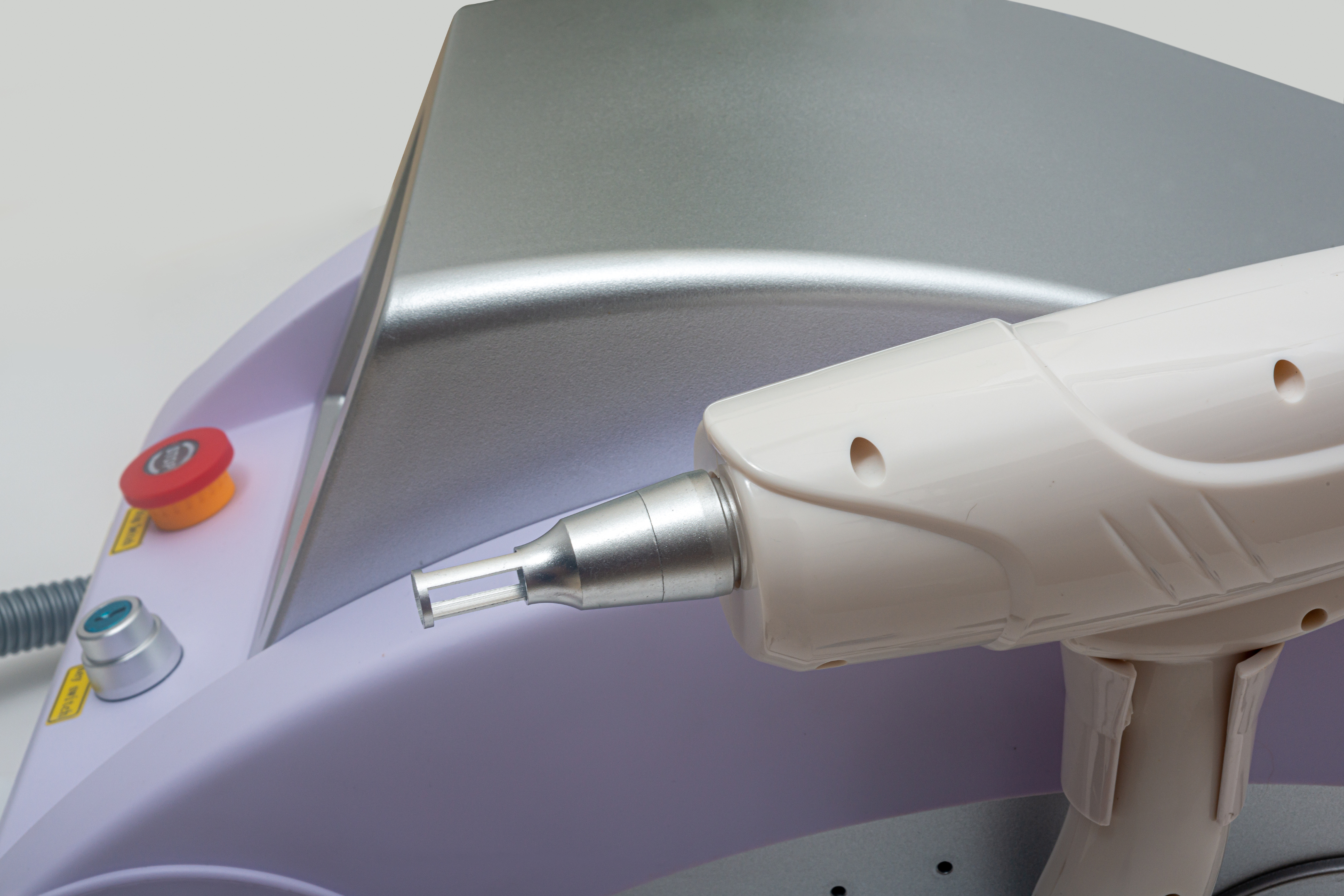
Mechanism: Erbium YAG lasers emit light at a wavelength of 2,940 nm.
Brands: Sciton Joule Erbium, Cutera Pearl, Fotona Dynamis
Uses:
- Skin Resurfacing: Treats fine lines, wrinkles, and pigmentation issues.
- Lesion Removal: Treats benign skin growths and certain types of acne scars.
Contraindications:
- Same as CO2 lasers
Risks & Side Effects:
- Redness and swelling
- Risk of infection and scarring
- Hyperpigmentation or hypopigmentation
Non-Ablative Lasers
Non-ablative lasers, including Nd and Diode lasers, penetrate the skin without removing the outer layer. These types of laser treatments work by heating the underlying skin tissue to stimulate collagen production and promote skin tightening, thus achieving rejuvenation with minimal downtime. Non-ablative lasers are effective for treating mild to moderate skin issues such as fine lines, pigmentation, and vascular lesions. Their mechanism involves deeper penetration into the skin to target specific tissues, promoting gradual improvement in skin texture and appearance.
1. Nd Lasers
Mechanism: Nd lasers emit light at a wavelength of 1064 nm, penetrating deep into the skin to target blood vessels and pigmentation.
Brands: Candela GentleYAG, Cutera Xeo, Sciton Joule Nd
Uses:
- Vascular Lesions: Treats spider veins, telangiectasias, and hemangiomas.
- Hair Removal: Effective on darker skin types.
- Pigmented Lesions: Treats age spots, sun spots, and melasma.
- Skin Rejuvenation: Stimulates collagen production.
- Tattoo Removal: Targets dark tattoo pigments.
- Acne Treatment: Reduces sebaceous gland activity.
Contraindications:
- Pregnancy
- Active infection in the treatment area
- Recent tanning
Risks & Side Effects:
- Pain, redness, and swelling
- Hyperpigmentation or hypopigmentation
- Rare risk of scarring
2. Diode Lasers
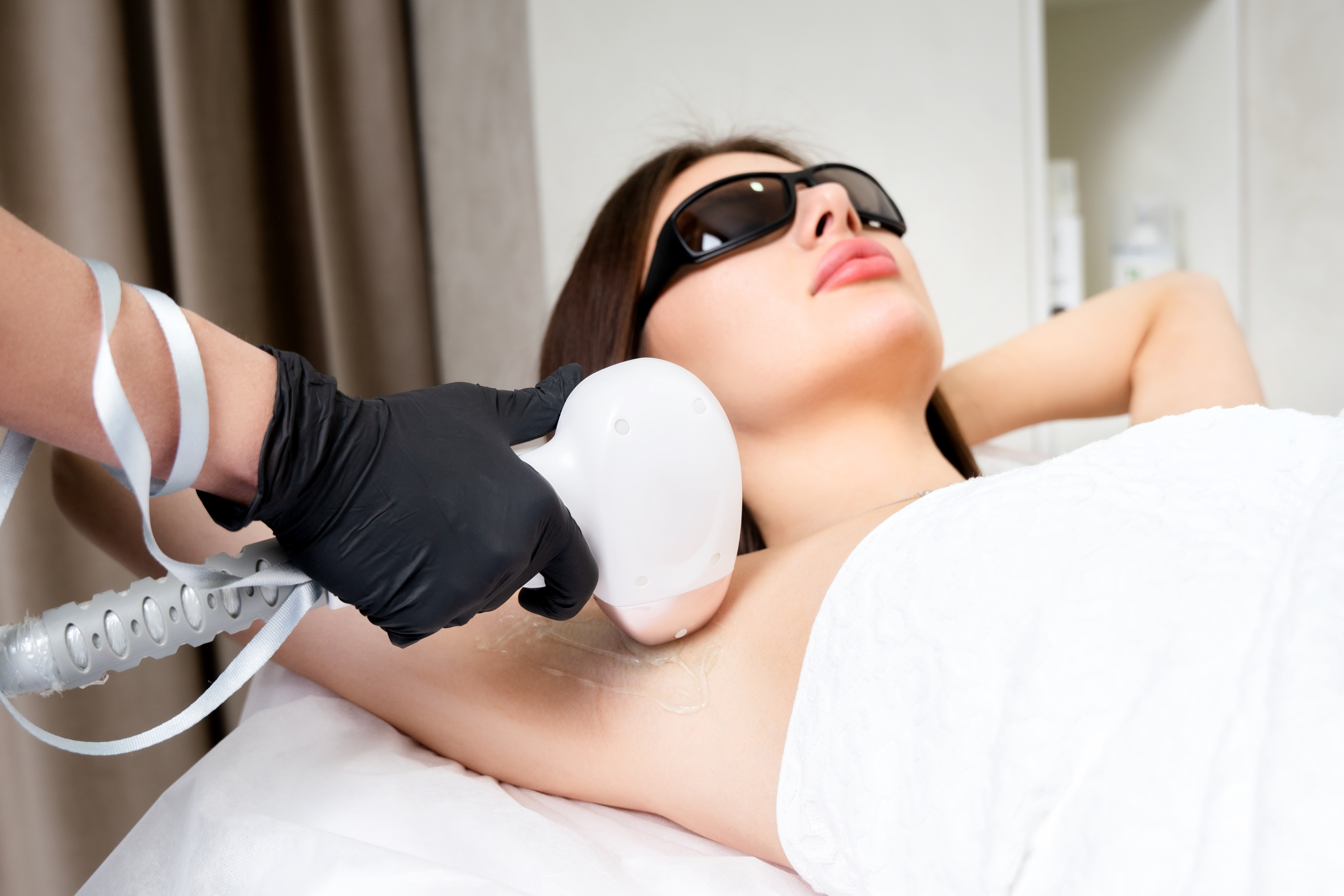
Mechanism: Diode lasers emit light at wavelengths between 800 nm and 900 nm, targeting melanin in hair follicles.
Brands: Lumenis LightSheer, Alma Soprano ICE, Cynosure Vectus
Uses:
- Hair Removal: Effective on various skin types, particularly for dark hair
Contraindications:
- Pregnancy
- Active infection in the treatment area
- Recent tanning
Risks & Side Effects:
- Pain, redness, and swelling
- Hyperpigmentation or hypopigmentation
Fractional Lasers
Fractional lasers, like Fractional CO2 and Fractional Erbium lasers, provide a middle ground between ablative and non-ablative lasers. They create microthermal zones, treating small fractions of the skin at a time while leaving surrounding tissue intact. This approach promotes quicker healing and collagen production, offering significant improvement in skin texture and tone with moderate downtime. Fractional lasers are commonly used for skin resurfacing, wrinkle reduction, and scar treatment, leveraging the precise creation of tiny wounds to stimulate extensive tissue remodeling.
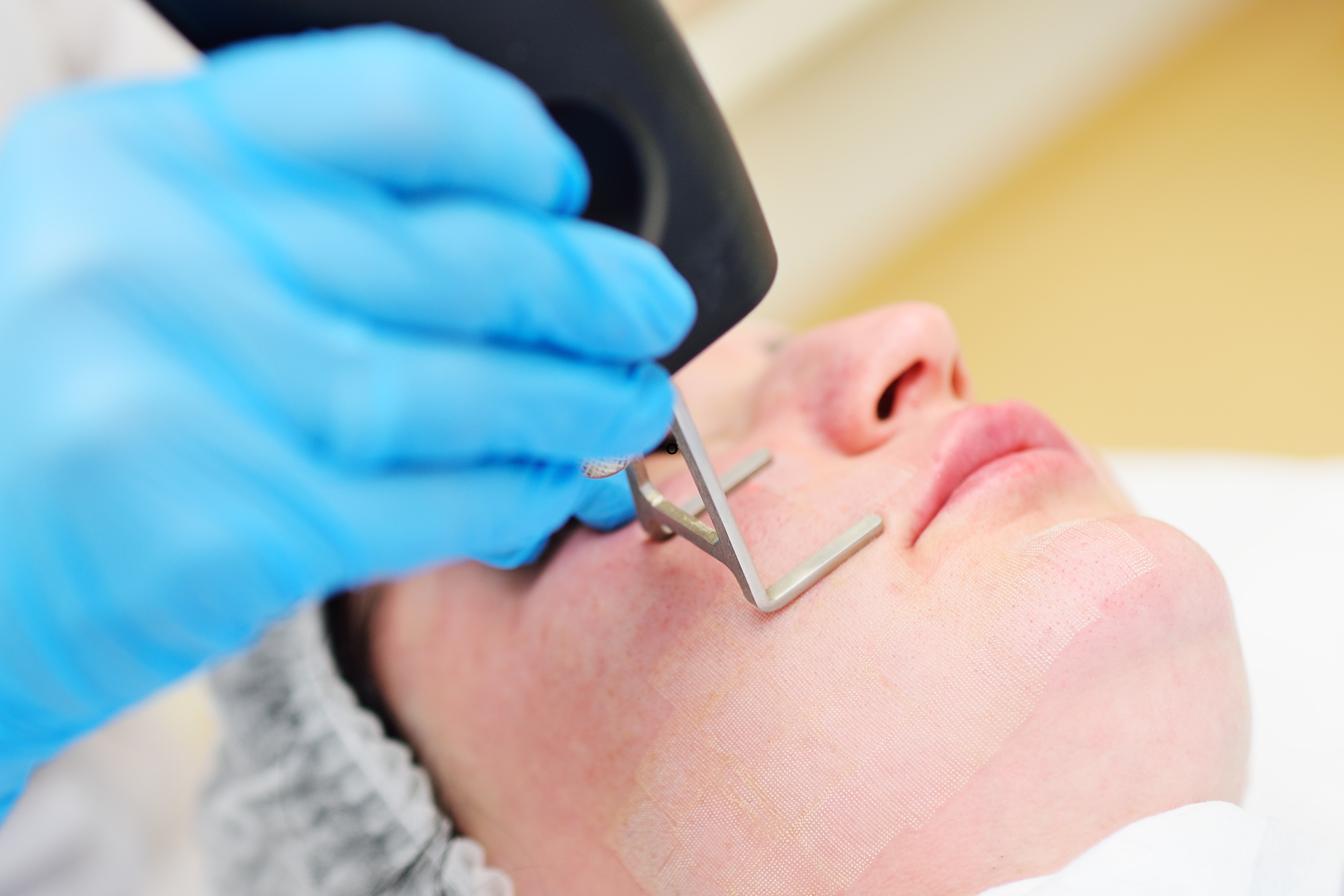
1. Fractional CO2 Lasers
Mechanism: Fractional CO2 lasers create microthermal zones, promoting collagen creation and skin renewal while leaving surrounding tissue intact.
Brands: Fraxel re, Lumenis AcuPulse, DEKA SmartXide
Uses:
- Skin Resurfacing: Treats wrinkles, scars, and sun damage.
- Scar Treatment: Reduces appearance of acne scars and surgical scars.
Contraindications:
- Same as regular CO2 lasers
Risks & Side Effects:
- Redness, swelling, and pain
- Risk of infection and scarring
- Changes in skin pigmentation
2. Fractional Erbium Lasers
Mechanism: Fractional Erbium lasers also create microthermal zones but with less thermal damage compared to fractional CO2 lasers.
Brands: Fraxel Dual, Sciton ProFractional, Cutera Pearl Fractional
Uses:
- Skin Resurfacing: Treats fine lines, wrinkles, and pigmentation issues.
- Scar Treatment: Effective for acne scars and scars from surgery.
Contraindications:
- Same as regular Erbium YAG lasers
Risks & Side Effects:
- Redness and swelling
- Risk of infection and scarring
- Hyperpigmentation or hyperpigmentation
3. Fractional Thulium Lasers
Mechanism: Creates microthermal zones in the skin to stimulate collagen production and promote skin rejuvenation while leaving surrounding tissue intact for quicker recovery.
Brands: Sciton Moxi, Lutronic LaseMD
Uses:
- Skin Resurfacing: Treats fine lines, wrinkles, and pigmentation issues.
- Scar Treatment: Effective for acne scars and scars from surgery.
- Melasma Treatment: Helps in the treatment of melasma by targeting pigmentation.
- Skin Tone and Texture Improvement: Enhances overall skin tone and texture.
Contraindications:
- Active infection in the treatment area.
- Pregnancy or breastfeeding.
- A propensity for keloid formation.
- Use of isotretinoin within the past 6 months.
Risks & Side Effects:
- Redness and swelling
- Risk of infection and scarring
- Hyperpigmentation or hypopigmentation
Pulsed Dye Lasers
Pulsed dye lasers target blood vessels and hemoglobin in the skin, making them particularly effective for treating vascular lesions and redness. These types of laser treatments emit light at specific wavelengths that are absorbed by hemoglobin, causing coagulation and destruction of abnormal blood vessels. PDLs are commonly used for conditions such as port-wine stains, rosacea, and spider veins. Their mechanism focuses on selectively targeting vascular structures without significant damage to surrounding tissues.
Mechanism: Pulsed dye lasers emit light at 585-595 nm, which is absorbed by hemoglobin, targeting blood vessels.
Brands: Candela Vbeam, Syneron-Candela Perfecta, Fotona Dynamis SP
Uses:
- Vascular Lesions: Treats port-wine stains, rosacea, and spider veins.
- Skin Rejuvenation: Reduces redness and improves skin tone.
Contraindications:
- Photosensitivity disorders
- Recent use of photosensitizing drugs
Risks & Side Effects:
- Bruising, redness, and swelling
- Hyperpigmentation or hypopigmentation
Q-Switched Lasers
Q-switched lasers deliver high-intensity pulses of light in extremely short durations, making them ideal for pigment-specific treatments like tattoo removal and pigmented lesions. These types of laser treatments work by causing photoacoustic (light that is converted to sound waves through shocks and vibration) disruption of pigment particles, breaking them down for natural removal by the body. Q-switched lasers are highly effective for removing dark tattoo inks and treating various pigmented skin lesions due to their ability to target pigments precisely without extensive thermal damage.
Mechanism: Q-switched lasers emit high-intensity pulses at various wavelengths (532 nm, 755 nm, 1064 nm), targeting pigments and tattoo inks.
Brands: MedLite C6, RevLite SI, Quanta Q Plus C
Uses:
- Tattoo Removal: Effective for dark and multicolored tattoos.
- Pigmented Lesions: Treats age spots, sun spots, and freckles.
Contraindications:
- Active infection in the treatment area
- Recent tanning
- Risks & Side Effects:
- Pain, redness, and swelling
- Risk of scarring
- Hyperpigmentation or hypopigmentation
Intense Pulsed Light (IPL)

Mechanism: IPL uses broad-spectrum light (500-1200 nm) to target pigment and blood vessels. Unlike lasers, it uses multiple wavelengths.
Brands: Sciton BroadBand Light (BBL), Lumenis M22, Cynosure Icon
Uses:
- Hair Removal: Targets melanin in hair follicles.
- Pigmentation: Treats age spots, sun spots, and melasma.
- Vascular Lesions: Treats rosacea and spider veins.
- Skin Rejuvenation: Improves skin texture and tone.
Contraindications:
- Photosensitivity disorders
- Recent tanning
Risks & Side Effects:
- Pain, redness, and swelling
- Hyperpigmentation or hypopigmentation
LED Therapy
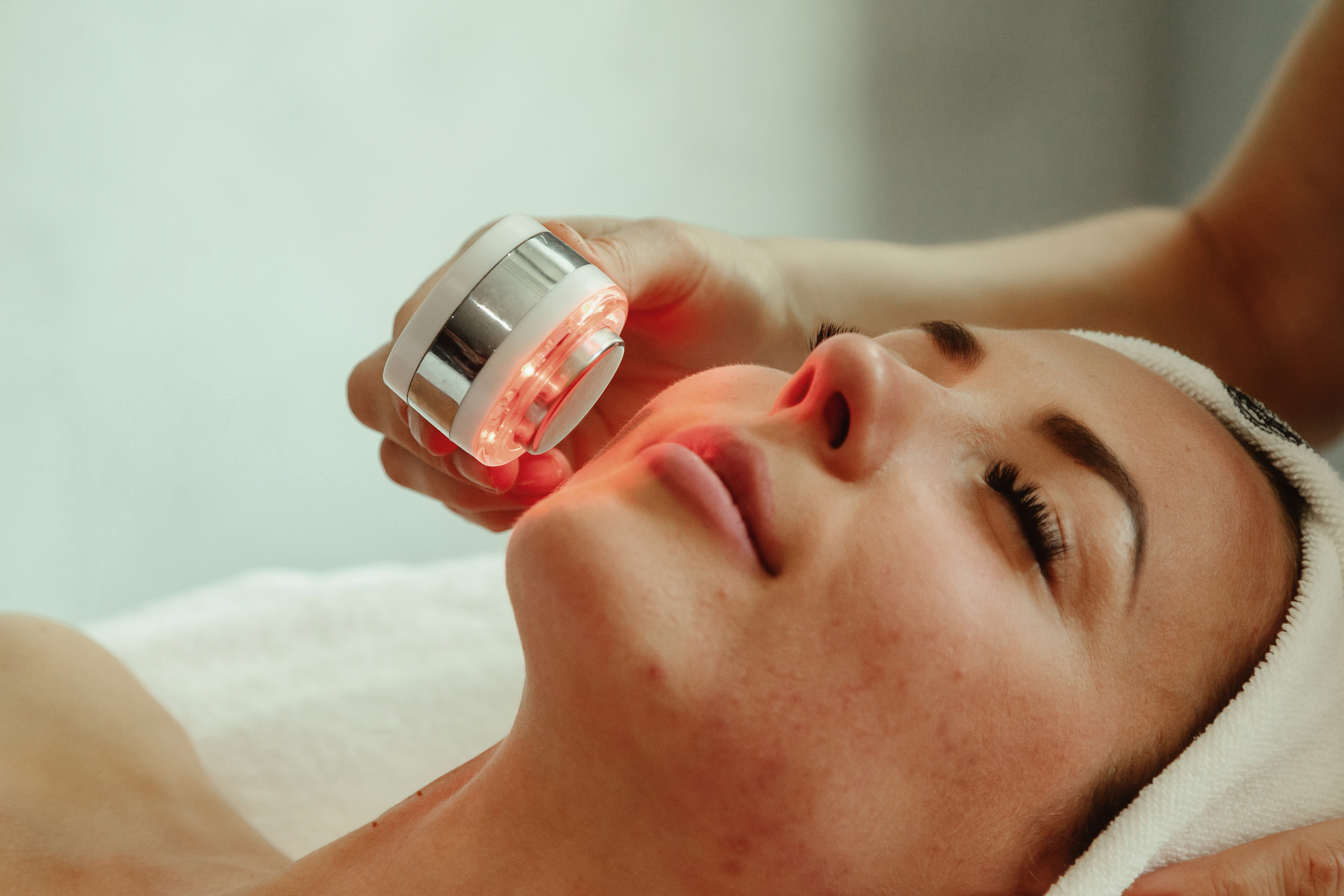
LED therapy uses different wavelengths of light, including blue, red, and near-infrared, to stimulate cellular activity and promote healing. Blue light targets and kills acne-causing bacteria, while red and near-infrared light penetrate deeper to promote collagen production and reduce inflammation. LED therapy is non-invasive and has no recovery, making it popular for acne treatment, wound healing, and anti-aging applications. The mechanism involves modulating cellular functions to enhance skin health and appearance.
LED therapy is relatively new compared to other established laser and phototherapy treatments. While it has shown promising results, it’s still being studied to further evaluate its long-term effectiveness.
Mechanism: LED therapy uses different wavelengths (blue, red, near-infrared) to stimulate cellular activity and promote healing.
Brands: Celluma PRO, Omnilux Revive, LightStim for Acne
Uses:
- Acne Treatment: Blue light kills P. acnes bacteria.
- Wound Healing: Red and near-infrared light promote collagen production and reduce inflammation.
- Anti-Aging: Red light reduces wrinkles and improves skin texture.
Contraindications:
- Photosensitivity disorders
Risks & Side Effects:
- Minimal; possible mild redness or irritation
UV Phototherapy
UV phototherapy utilizes UVA or UVB light to treat certain chronic skin conditions by reducing cell proliferation and inflammation. This type of light induces DNA damage in skin cells, leading to a decrease in their overactive proliferation. This therapy is commonly used for conditions like psoriasis, eczema, and vitiligo. While effective, UV phototherapy has potential long-term risks, including earlier skin aging and increased skin cancer risk due to cumulative UV exposure.
Mechanism: UV phototherapy uses UVA or UVB light to induce DNA damage in skin cells, reducing cell proliferation and inflammation.
Brands: Daavlin Series 7 (UVB), Philips UV-B Narrowband TL Lamps, National Biological UV Series
Uses:
- Psoriasis: Reduces plaques and scales.
- Eczema: Reduces inflammation and itching.
- Vitiligo: Stimulates repigmentation.
Contraindications:
- Photosensitivity disorders
- History of skin cancer
Risks & Side Effects:
- Sunburn-like reactions
- Premature skin aging
- Increased risk of skin cancer with long-term use
Contraindications and Warnings of Laser and Phototherapy Treatments
Before undergoing any laser or phototherapy treatment, it’s essential to consider potential contraindications and warnings to ensure safety and effectiveness.
General Contraindications
- Pregnancy (for certain treatments)
- Active infections or herpes simplex in the treatment area
- History of keloids or hypertrophic scarring
- Photosensitivity disorders
- Recent use of isotretinoin (within 6 months)
Specific Warnings
- Ablative Lasers: High risk of infection; require significant recovery.
- Non-Ablative Lasers: Can be risky in patients with darker skin types (risk of hyperpigmentation).
- IPL: Not suitable for very dark skin (risk of burns and pigmentation changes).
Risks and Side Effects of Laser and Phototherapy Treatments
Understanding the potential risks and side effects associated with types of laser and phototherapy treatments is crucial for making informed decisions about your care.
Common Risks
- Pain during and after treatment
- Redness and swelling
- Hyperpigmentation or hypopigmentation
- Infection
Long-Term Effects
- Positive: Improved skin texture and appearance, reduction in unwanted hair, and clearance of vascular and pigmented lesions.
- Negative: Potential for scarring, changes in skin texture, and pigmentary alterations.
Conclusion
Laser and phototherapy treatments offer a range of options for addressing various skin and cosmetic concerns. With various options available, it’s helpful to know how these treatments work, what they can achieve, and what to expect in terms of results, risks, and costs. By choosing a treatment that fits your specific needs and skin type, you can enjoy safe and effective results tailored just for you.
Ready to Transform Your Skin with Laser and Phototherapy?
At Allure Aesthetics in King of Prussia, near Philadelphia, we offer multiple types of laser treatments, including BroadBand Light (BBL) and Moxi, to help you achieve a radiant, youthful complexion. Our BBL treatment can reverse signs of aging, reduce redness and rosacea, and target acne, all with minimal recovery time. For a deeper treatment to improve texture and tone, Moxi is an ideal choice, often used as a preventative option for maintaining youthful skin.
Discover the power of laser and phototherapy tailored to your needs. For more details, feel free to email us at info@allureaestheticsllc.com. If you’re ready to book your appointment, click here to get started on your journey to healthier, glowing skin!
Feel free to also visit our Instagram to see before and after photos!




